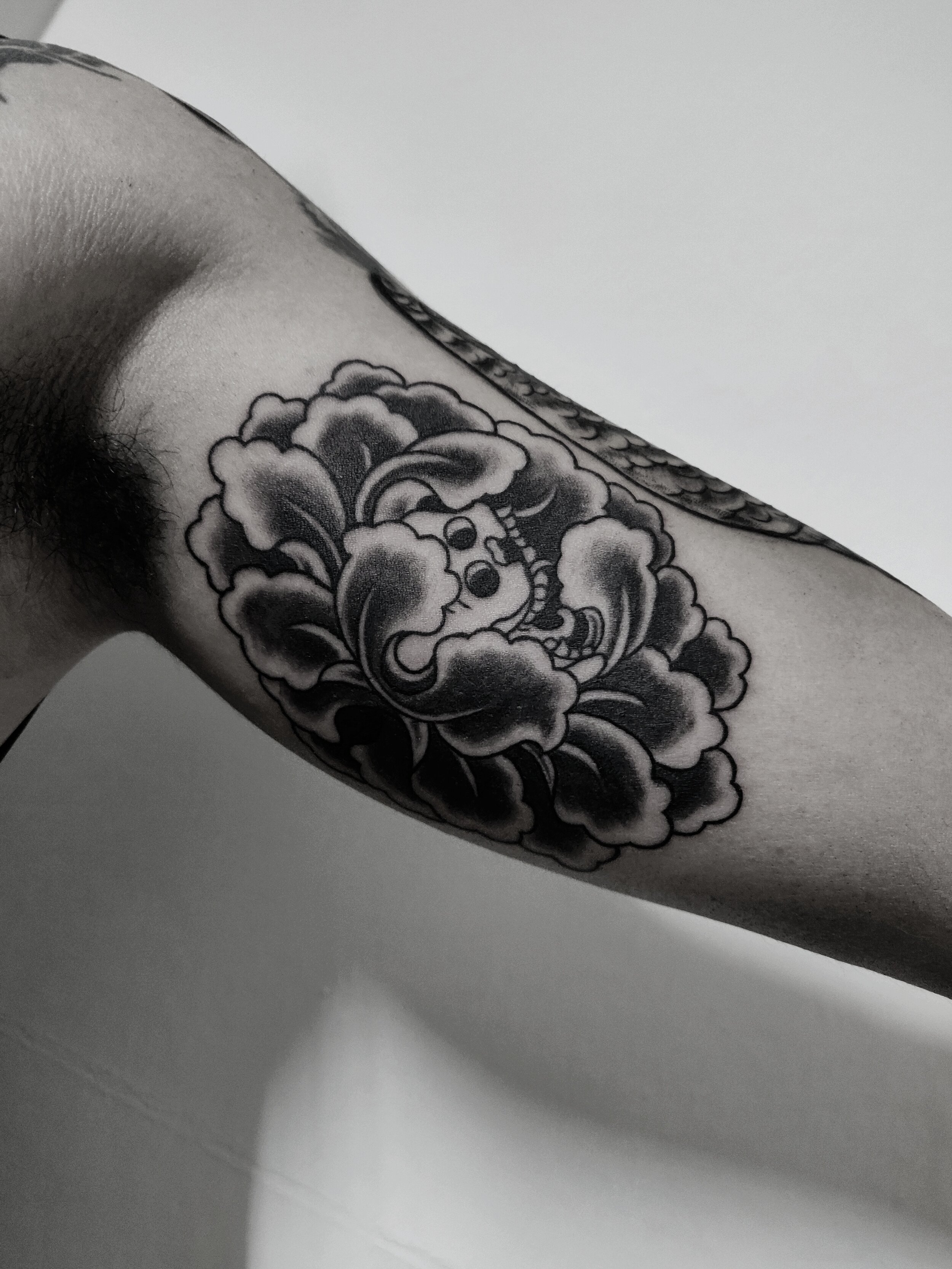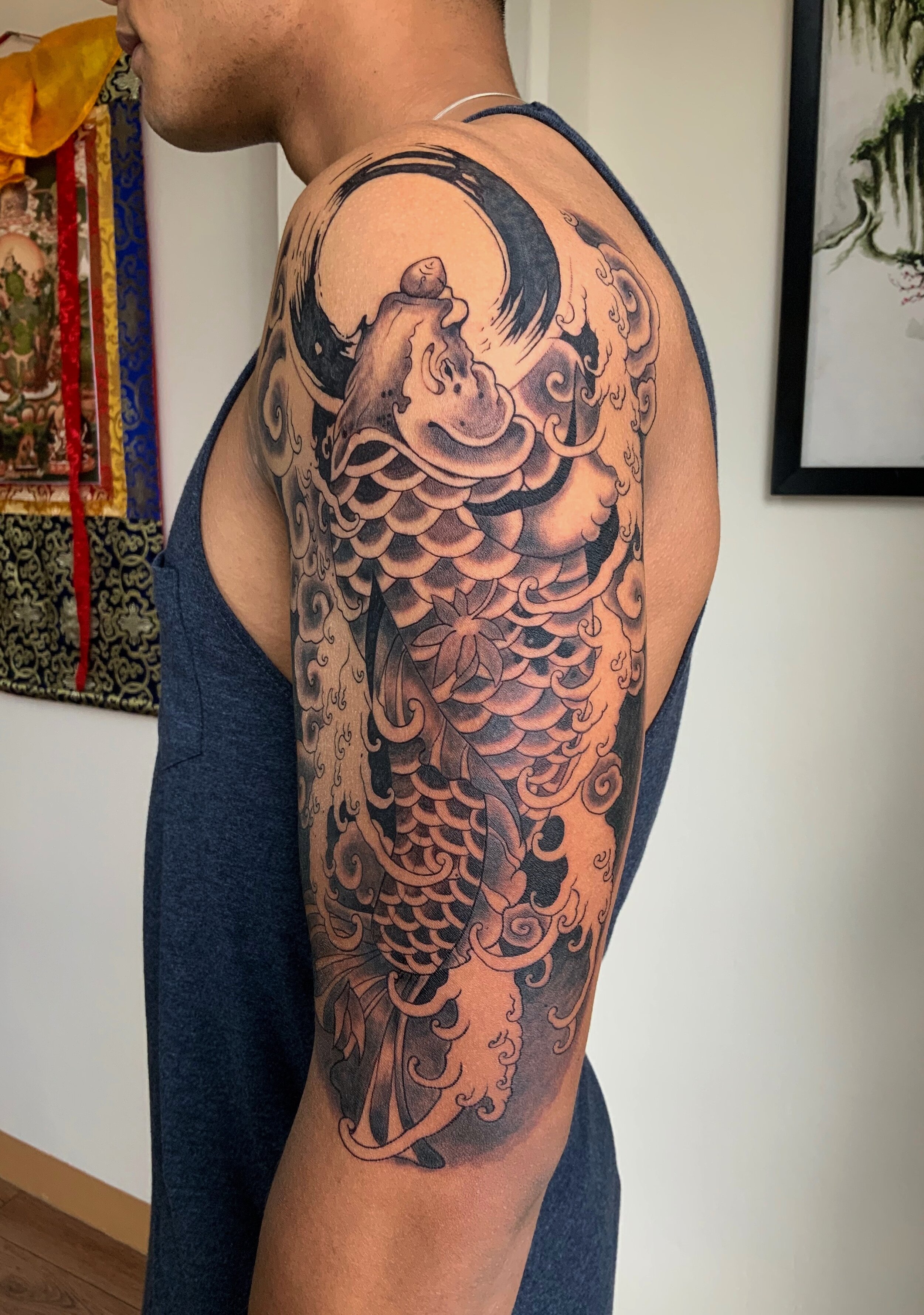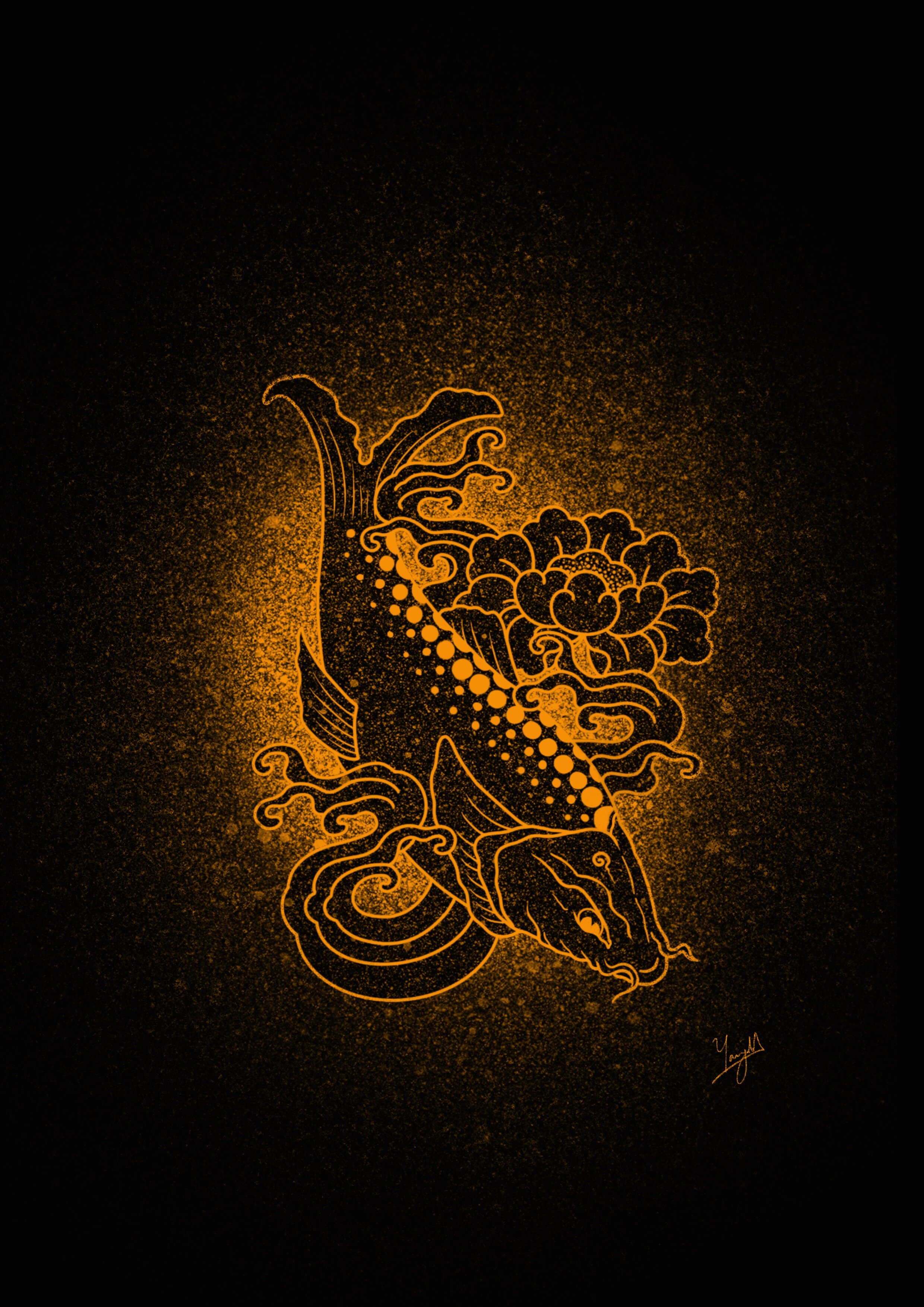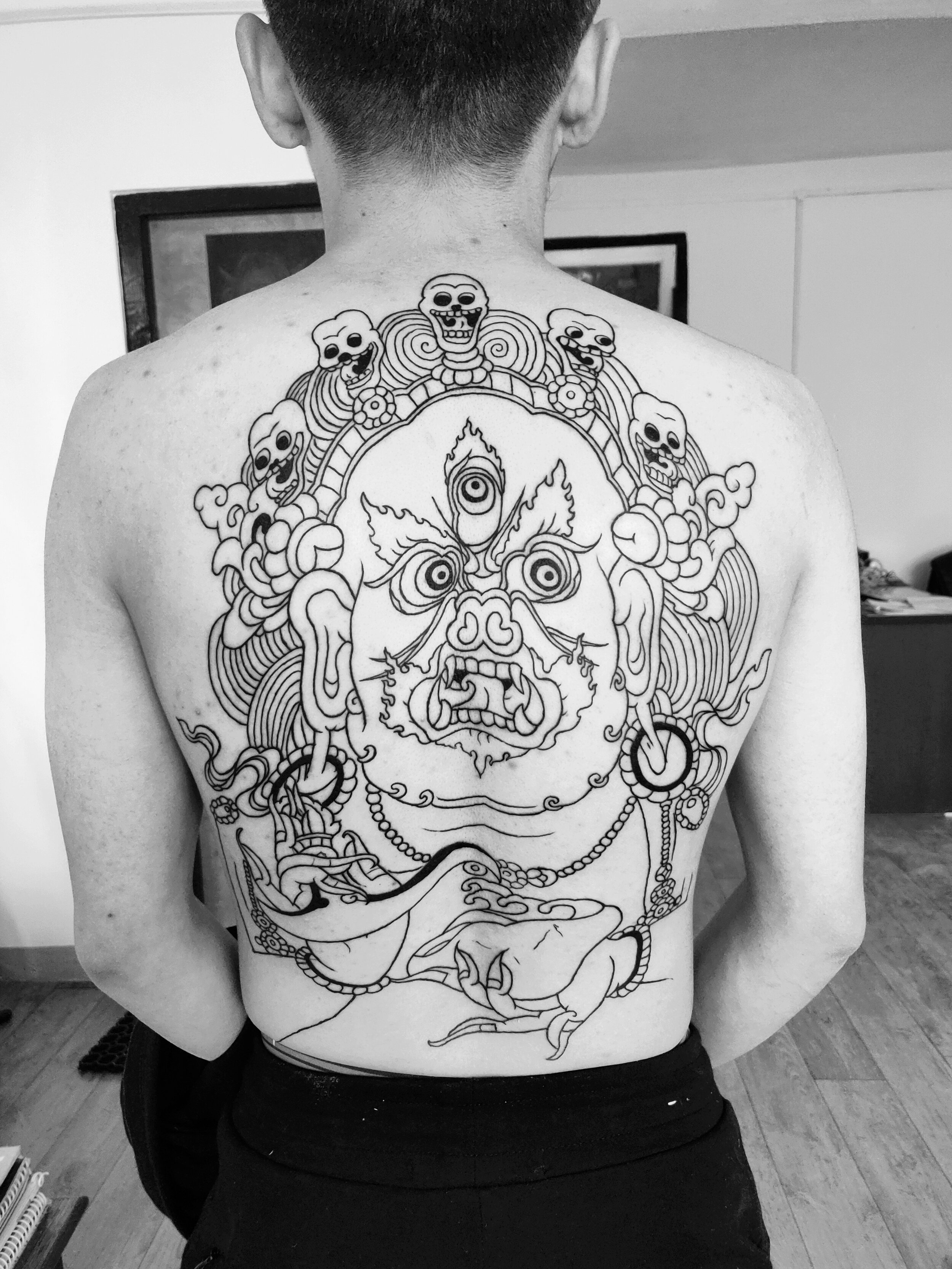Interview with Yangdol Namgyal: The Spotlight Series Ep. 5

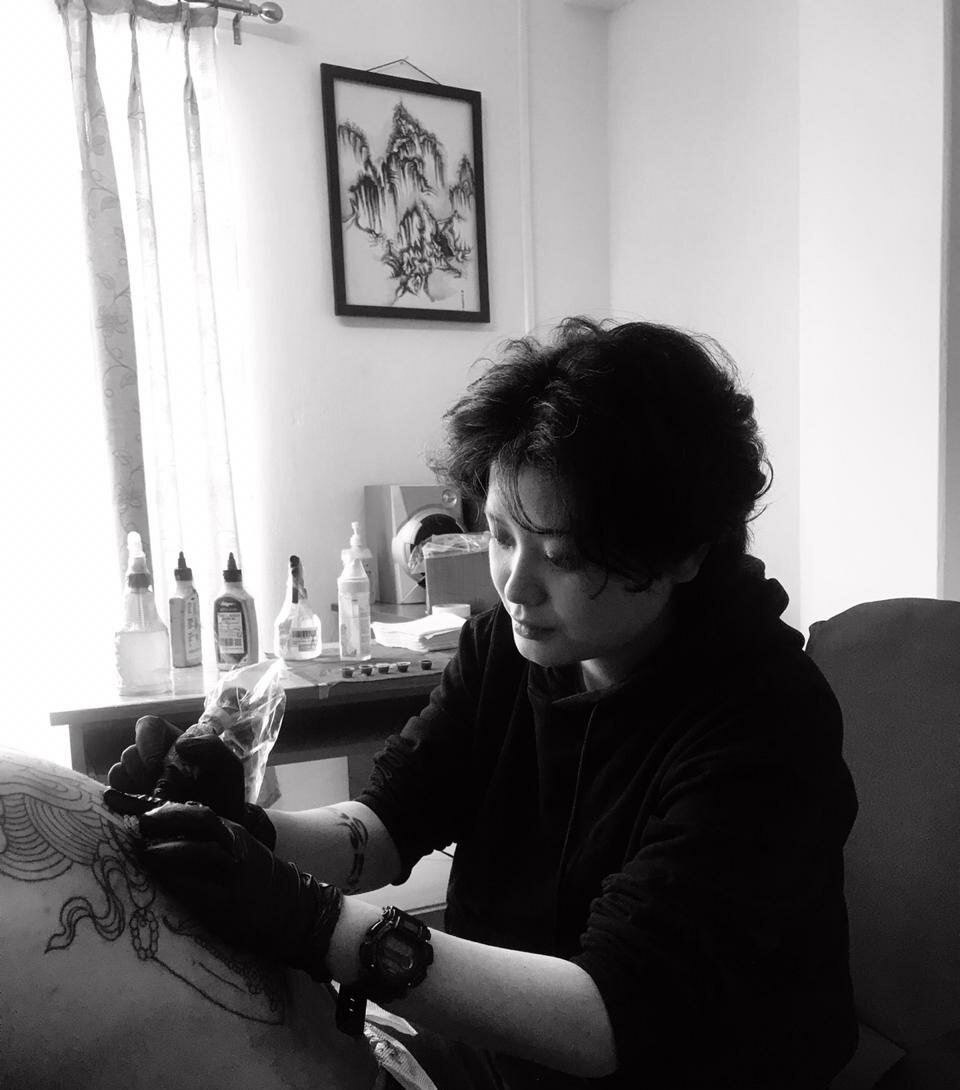
The Spotlight Series is a documentary series by The Yakpo Collective that highlights prominent Tibetan contemporary artists and their artworks. The series exist to provide resources for generations to come, in order to foster a learning environment based on art and creativity.
Can you tell me a little bit about what you do and your background?
Yangdol: I am a tattoo artist, from Sikkim, India, and I studied graphic design in Bengaluru. Currently I am also learning Thangka painting under a Sikkimese Lharipa.
How did you start exploring tattoo art? Why do you make art?
Y: Ever since I was a child I knew I was going to be an artist and was always drawn towards it. I was introduced to tattooing by my teacher Mr. Gyaltsen Lama at a very young age.
What does Tibetan Contemporary art mean to you and does your Tibetan Identity influence your work in any way?
Y: My art is not fully contemporary, because I depict traditional Tibetan art in my tattooing. However, it is not fully traditional as well, as tattooing is a contemporary medium. I can also say it is contemporary in its nature because I work with identity, which is one of the elements of contemporary art. My intent in adopting Tibetan style in tattooing is to generate intrigue in the minds of the new generation and introduce them to the Tibetan world of signs, symbols and storytelling which constitute the core values of a person belonging to the Tibetan heritage and I also believe it has a lot to offer to a person not belonging to the Tibetan heritage as well, in the form of various Buddhist knowledge systems. I believe this is my contribution to the preservation of our culture. Inspite of the cultural genocide and destruction of Tibetan art in the past by the Communist Chinese government, Tibetan art will always continue to thrive and will live on through us, in different mediums and approaches, and in my case, in our skin and in our ink.
Background and inspiration for 3 curated works.
Y: Sernya/Tibetan skull and lotus - Tibetan art is governed by various rules and although I am already in a box by adopting this style, I can say that I can be creative within this box because tattooing gives me the freedom to do that. So I can mix American and Japanese influences with Tibetan. However, there are pieces as these where I decide to remain quintessentially Tibetan. That being said I am also learning Thangka painting from a Sikkimese Lharipa and I do not intend to do this in my thanka art because then the essence of thangka painting would be lost.
Koi with Torma/ Lopta- Whether or not my tattoos are completely Tibetan style or not also depends on the client because tattooing is a collaborative process that requires teamwork. If the client insists on Japanese, American or any other style then I fuse it with Tibetan style so that they have a piece of me in that artwork. I do like to fuse different cultures with Tibetan because I am the type of person that likes to study different cultures and identify similarities amongst them. This inclusive approach gives me more perspective and empathy, while not forgetting my Tibetan roots. Here I am introducing the viewers to Lopta ie. Tibetan horoscope through tattooing. The main characters are Japanese while the Lotus and clouds are done in Tibetan style. The Koi is completely Japanese, while the Torma ie. The ritual offering in its mouth is Tibetan.
Has being a woman in this industry helped you in some ways or was it ever a disadvantage?
Y: My influences are the Lharipas of the past and Japanese tattooers and also I have been influenced a lot by Chinese contemporary artists like Ai Wei Wei in terms of standing up for what you believe in. Being a woman tattoo artist can be a hindrance to us in many ways but we can overcome them. In the beginning people said I can't be a tattoo artist solely because I'm a woman. Now that I am a tattoo artist they say I am getting recognized solely because I am a woman. But I feel we should do what we do for ourselves and not to prove anything to others as there will always be criticism. I also practice the Buddhist way of seeing the good and the bad with equanimity. If I fail it's going to be because of myself and not because a section of the society stopped me from succeeding.
In our Tibetan Communities, there are many stigmas attached to tattoos, as in Buddhism It is taught that our body is a holy temple. Many older Tibetans think it is sinful to have tattoos on our bodies? How do you deal with such a stigma? Have you faced any backlash for being a tattoo artist? And how do you overcome it?
Y: Yes there are stigmas related to tattooing in Tibetan Buddhism and I did ask my family’s head lama about it and surprisingly he said that even he wanted to get the Tashi Tagye tattooed on him. According to him tattoos are a stigma because Buddhism teaches us to give up on decorating our bodies and overcome worldly desires but at the same time, it doesn't mention tattoos explicitly. He said if we were to completely follow the scriptures, then we would have to give up using makeup on our faces as well, which is not possible for lay people. As for me and many other western tattooists who do Tibetan style of tattoos, it is just a new medium for us to spread Dharma to the world. Also I think Buddhism is a subject to adaptation to the new world, like Padmasambhava adapted Buddha's teachings with the Bon religion that was already present in Tibet. And as the Buddha famously said “the finger that points to the moon, is not the moon.”
How do you overcome artist’s block? Do you have any tips for others?
Y: In order to overcome the artist's block I think it is very important for us to know that it might not always be an external thing, it could also be that something is wrong with our inner self. So I suggest that we look deeply into our own minds and find out what is not right within ourselves. Meditation and writing down my contemplations is what helps me overcome my artist block.
What are your thoughts on platforms such as The Yakpo Collective?
Y: Platforms such as Yakpo Collective represents the sensible use of social media which helps and connects like-minded people throughout the world, irrespective of geographical distance. I think it's very helpful and motivating to young artists like me who are given a spotlight and our voice can reach a wider audience.
